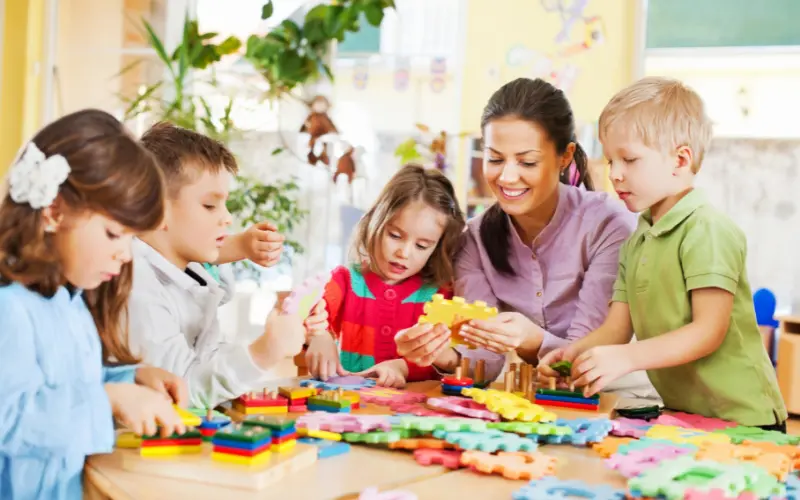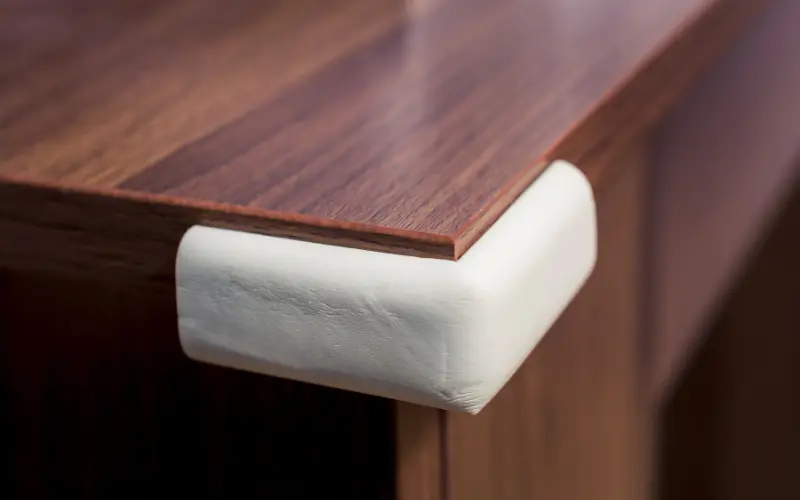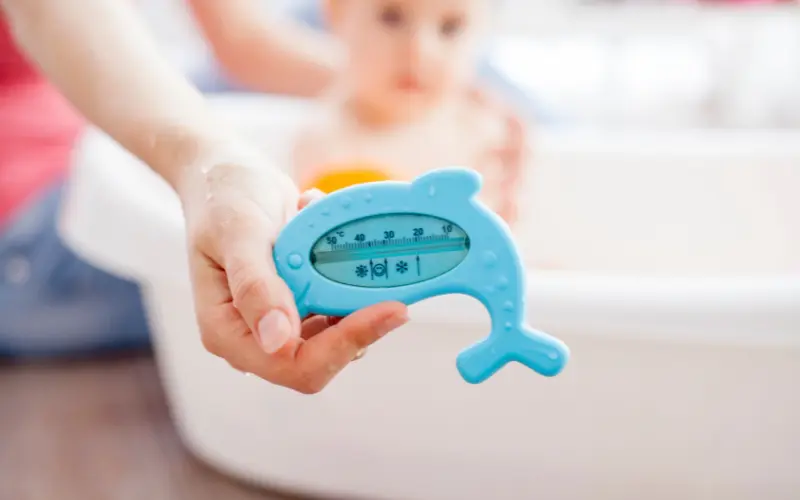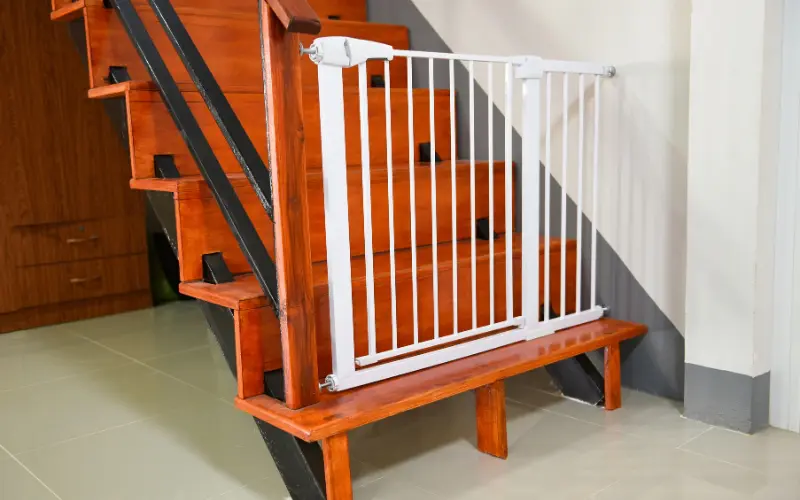Table of Contents
Babyproofing House Room Checklist
When your little one starts to explore the world around them, your home suddenly becomes filled with potential hazards. From sharp edges to electrical outlets, there are many things that can pose a risk to a curious baby. Babyproofing your home is an essential step to ensure that your child can explore safely. In this article, we’ll walk you through A Room-by-Room Guide To Baby Proofing Your Home, so you can safeguard every space with practical solutions, valuable insights, and expert recommendations. By the end, you’ll have a complete Baby Proofing Checklist: A Room-by-Room Guide to help you create a safe, loving environment.
For a comprehensive guide on keeping your little ones safe at home, check out the CDC’s safety tips for infants and toddlers. This resource covers essential safety practices to help protect your child from common household hazards and ensure a secure environment for exploration.
1. The Nursery: Your Baby’s Safe Haven

The nursery is where your baby will spend a lot of time, so it needs to be as safe as it is comfortable. As the first space your baby becomes familiar with, it’s essential to prioritize this room when babyproofing.
- Crib Safety: Always ensure the crib meets current safety standards. Use a crib rail protector to prevent your baby from chewing on the crib rails, which can lead to paint ingestion.
- Changing Table Security: Secure your baby with the changing table’s safety straps and never leave them unattended. Store diapers, creams, and wipes within arm’s reach but out of your baby’s reach.
- Furniture Anchoring: Anchor dressers and bookshelves to the wall to prevent tip-over accidents. Babies love to pull themselves up using furniture, so these anchors are critical for preventing injuries.
- Soft Flooring: Consider using a plush rug or foam mats to cushion any falls during tummy time or when your baby starts crawling.
Our Crib Rail provides extra comfort and safety for your little one during their teething phase.
2. The Living Room: High Traffic, High Risk

The living room is often the central hub of activity in your home. With so many items within reach, it’s vital to take precautions.
- Corner Protectors: Use corner guards on coffee tables, side tables, and other furniture with sharp edges. Babies are at eye-level with these corners, so protecting them is essential.
- Furniture Anchors: Much like in the nursery, anchoring heavy furniture like bookshelves, TV stands, and entertainment centers is key. Flat-screen TVs should also be secured to the wall to prevent tip-overs.
- Cords and Wires: Hide or cover any exposed electrical cords using cord management systems or power strip covers. Unsecured cords can pose a strangulation risk or be tempting for babies to pull on.
- Fireplace Precautions: If you have a fireplace, use a babyproof fireplace gate to prevent access. Make sure any tools or accessories are out of reach.
3. The Kitchen: Full of Hazards
The kitchen, with its abundance of appliances, sharp objects, and cleaning supplies, can be one of the most dangerous rooms for a baby. Taking a few babyproofing steps can make it much safer.
- Stove and Oven: Use stove knob covers to prevent your baby from turning on the stove accidentally. Install an oven lock to keep curious hands away from hot surfaces.
- Cabinet Locks: Install cabinet locks on lower cabinets, especially those containing cleaning supplies, knives, and glassware. You can also store these items in higher cabinets for added security.
- Trash Cans and Appliances: Keep trash cans and small appliances like toasters or blenders out of reach or secured with childproof latches. Babies love to open and explore, and these items can contain sharp or dangerous objects.
- Floor Hazards: Use non-slip mats in areas where spills might occur to avoid slipping accidents, especially near the sink or stove.
Our Cabinet Lock Set is ideal for securing cabinets and drawers, keeping your child away from harmful items.
4. The Bathroom: A Splash of Safety

Bathrooms are full of water hazards, slippery surfaces, and harmful chemicals. Babyproofing your bathroom is essential for preventing accidents.
- Water Temperature: Install a faucet cover and use a water temperature gauge to avoid scalding. Set your water heater to a safe temperature (below 120°F).
- Non-Slip Mats: Place non-slip mats both inside the bathtub and on the bathroom floor. Slippery surfaces can lead to dangerous falls, especially when wet.
- Toilet Locks: Install a toilet lock to prevent your baby from lifting the lid. Babies are curious and might be tempted to splash in the water, which can pose a drowning hazard.
- Medicine Storage: Keep all medications, toiletries, and cleaning supplies in locked cabinets. Even “child-resistant” caps are not foolproof, so storing these items out of reach is crucial.
Our Non-Slip Bath Mat ensures that bath time is both fun and safe, reducing the risk of slips and falls.
5. The Bedroom: Cozy Yet Secure

Even your bedroom needs to be babyproofed, especially if your baby will spend time there during the night or early morning.
- Bed Safety: If your toddler is transitioning to a “big kid” bed, use bed rails to prevent them from rolling out. Additionally, keep pillows, blankets, and stuffed animals out of the crib to reduce the risk of suffocation.
- Dresser and Closet Safety: Just like in other rooms, all furniture should be anchored. Closet doors should be secured with childproof locks if hazardous items like shoe polish or belts are stored inside.
- Window Safety: Secure window cords using cord shorteners or install cordless blinds. Ensure that windows have safety latches to prevent your child from opening them.
Try our Bed Rail Guard to keep your toddler safely in bed during the night.
6. The Stairs: A Major Danger Zone

Stairs present one of the biggest risks in your home, especially for babies just learning to crawl or walk.
- Safety Gates: Install sturdy baby gates at both the top and bottom of the stairs. Be sure to choose a gate that can be securely mounted and is not easily pushed over.
- Railing Guards: If your stair railings have wide gaps, consider installing railing guards to prevent your baby from slipping through or getting stuck.
- Carpet or Treads: If you have hardwood stairs, consider adding carpet runners or treads to provide extra traction and reduce the chance of slipping.
Our Stair Safety Gate is perfect for keeping your little one safe from dangerous falls on the stairs.
7. Outdoor Spaces: Don’t Forget the Yard
While much of babyproofing focuses on the interior of your home, don’t forget to take precautions in your outdoor spaces, too.
- Fencing: Make sure your yard is securely fenced, and that any gates have childproof locks. This is particularly important if you have a pool.
- Pools and Ponds: If you have a pool, ensure it is fenced with a self-latching gate and that a pool alarm is installed. A baby can fall into a pool in seconds, so these precautions are essential.
- Outdoor Equipment: Store lawn equipment, tools, and gardening chemicals in a locked shed or garage.
A Room-by-Room Guide To Baby Proofing Your Home: Final Tips
After you’ve gone through each room, it’s essential to re-evaluate every few months. Babies grow fast, and as they reach new developmental stages, their ability to access different parts of your home increases. To ensure that Creating a Baby-Proofed Home: A Room-by-Room Guide is effective, revisit your checklist often to make adjustments.
As part of your regular babyproofing checks, make sure:
- All babyproofing products are still securely installed and functioning properly.
- New furniture or appliances are properly anchored and cords are hidden.
- Dangerous items, such as medicines or cleaning supplies, are still stored out of reach.
Consider our All-in-One Baby Proofing Kit for a comprehensive solution to make your entire home safer.
Conclusion: Maintaining a Baby-Proofed Home
Remember that babyproofing is not a one-time event but an ongoing process. As your baby grows, they will discover new ways to interact with their environment. Stay vigilant by regularly updating your Baby Proofing Checklist: A Room-by-Room Guide and making necessary adjustments. By following this Room-by-Room Guide To Baby Proofing Your Home, you’re ensuring that your little one can safely explore their world with reduced risk of accidents.

